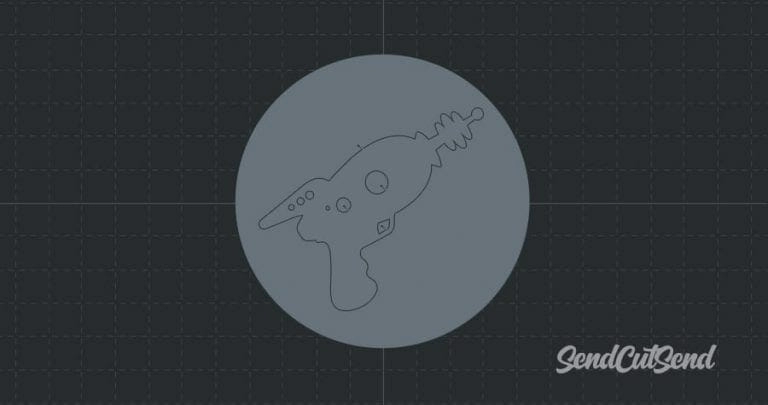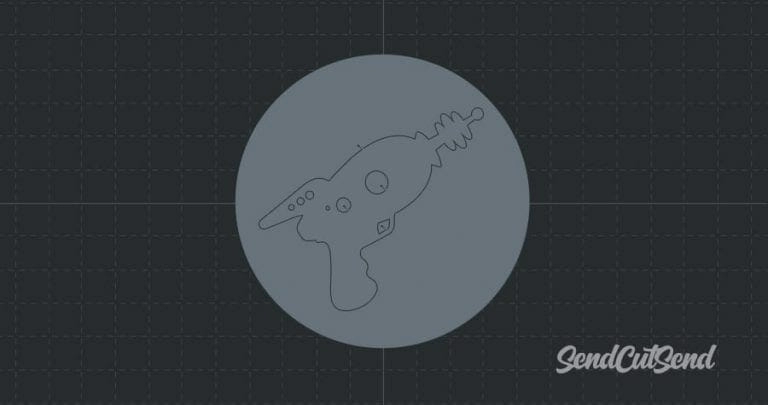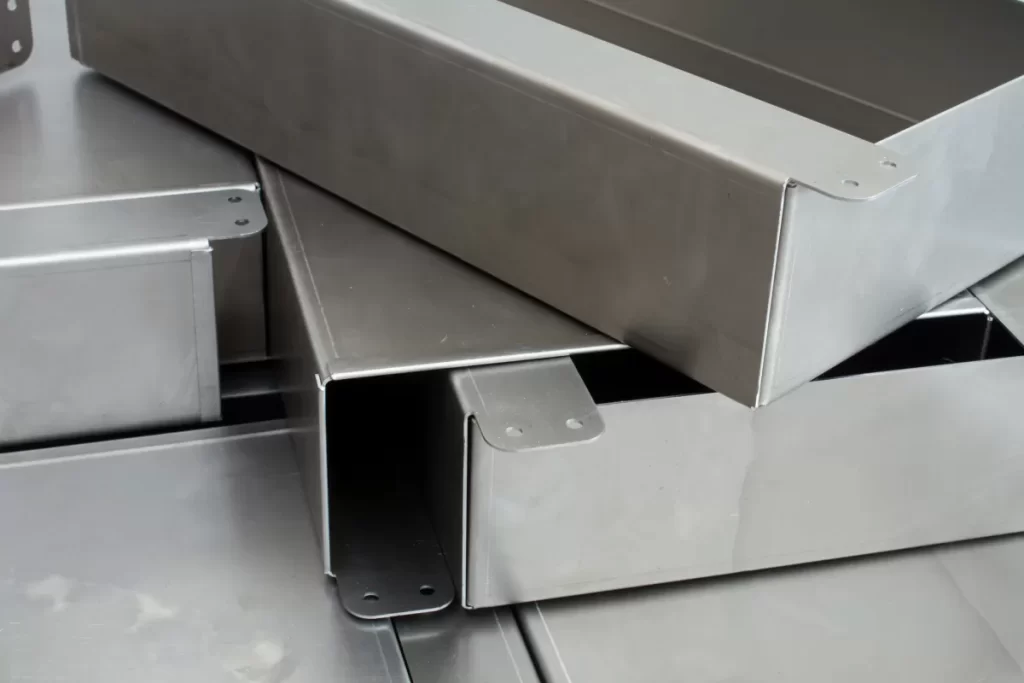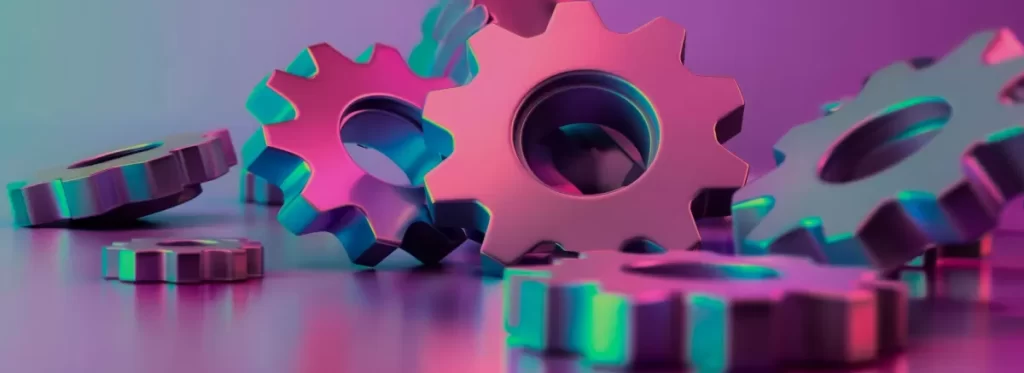Are you wondering what lead-ins and micro-tabs are in laser-cut metal? These small but critical details can make or break the quality of your metal parts. As experts in CNC machining, we at HYCNC know that mastering these elements is key to precision and efficiency in metal fabrication. In this guide, you’ll uncover the role of lead-ins and micro-tabs, learn practical design tips, and see how they elevate your laser cutting projects. Let’s dive in and unlock the secrets to flawless metal parts!
What Are Lead-Ins and Micro-Tabs in Laser Cut Metal A Complete Guide
When it comes to laser cut metal, understanding the role of lead-ins and micro-tabs is key to achieving clean, precise cuts and high-quality parts. Lead-ins are small connecting paths that guide the laser into the material before the main cut begins. They help reduce unwanted marks and ensure smooth cut edges. Micro-tabs, on the other hand, are tiny bridges left deliberately uncut to hold parts firmly in place during and after cutting. This prevents pieces from shifting or falling out prematurely, protecting delicate designs and maintaining part stability.
In this complete guide, we’ll explore what lead-ins and micro-tabs are, how they work, why they matter for your projects, and best practices for designing with them. Whether you’re in automotive, aerospace, or electronics manufacturing, mastering these laser cutting techniques can improve quality, cut down costs, and enhance efficiency. Plus, we’ll share insights on how HYCNC optimizes lead-ins and micro-tabs to deliver precise, reliable CNC metal fabrication results.
What Are Lead-Ins in Laser Cutting

Lead-ins in laser cutting are small, controlled entry paths the laser uses before cutting the main shape. Think of them as smooth on-ramps that help the laser start cutting without leaving marks or damaging the part’s edge. Their main purpose is to improve cut quality and avoid defects like rough edges or unwanted holes where the laser begins.
Here’s how lead-ins work:
- The laser head approaches the metal slightly off the final cut line.
- It slowly ramps up power while moving along this lead-in path.
- Once the laser reaches full power and stable cutting conditions, it moves onto the actual cut line.
When designing lead-ins, it’s important to consider:
- The length and angle of the lead-in path to avoid heat build-up.
- The part’s shape, ensuring the lead-in doesn’t interfere with the final piece.
- Material thickness and type, since different metals react differently to heat.
At HYCNC, we optimize lead-in designs to minimize scrap and improve finish quality. Our experience with CNC metal fabrication helps us tailor lead-in strategies based on specific metal types and cutting requirements, ensuring clean starts without extra cleanup. This careful setup reduces production time and enhances the precision laser cutting process.
For more tips on designing your parts for laser cutting, check out our guide on sheet metal manufacturing.
What Are Micro-Tabs in Laser Cutting
Micro-tabs are tiny, uncut sections left intentionally on a metal part during laser cutting to hold the piece in place. Their main purpose is to prevent parts from shifting, falling out, or warping once the cut is complete. This helps maintain stability and accuracy, especially when cutting intricate shapes or multiple small components.
Micro-tabs work by acting like small bridges that keep the part connected to the surrounding metal sheet. After cutting, these tabs can be easily removed by bending or filing without damaging the final piece. Proper design of micro-tabs includes choosing the right size, number, and placement based on the material and part complexity—for example, thicker sheets might need larger or more tabs for support.
At HYCNC, we focus on micro-tab precision to ensure your parts stay secure during cutting but are easy to separate afterward. Using advanced CNC machining services and specialized software, we fine-tune tab dimensions and positions to improve cut quality and part handling. This attention to detail reduces damage and post-processing time, saving you money and improving overall efficiency.
For more design tips and info on precision laser cutting, check out our best practices for designing and laser cutting small parts.
Why Lead-Ins and Micro-Tabs Matter in Laser Cutting
Lead-ins and micro-tabs play a crucial role in the overall quality and efficiency of laser cut metal parts. Without proper use of lead-ins, the laser may cause burn marks or distortions at the starting point of the cut, which can lower the finish quality and increase scrap rates. Micro-tabs, on the other hand, help hold the part in place during cutting, preventing it from shifting or falling out before the job is complete. This stability is key to achieving precise, clean cuts every time.
From a cost perspective, using well-designed lead-ins and micro-tabs reduces material waste and cutting time, which translates into savings on both materials and machine hours. They’re especially important when working with expensive or thin sheet metals where maintaining cut integrity is critical.
Industries such as automotive, aerospace, and electronics rely heavily on these features to meet their strict quality and safety standards. Parts produced without proper lead-in and micro-tab strategies can result in failure under stress or misalignment in assembly.
At HYCNC, we optimize lead-in design and micro-tab placement to balance cut quality with efficiency. Our expertise helps reduce material deformation, minimize dross, and keep critical dimensions intact, making sure your parts meet high industry standards while cutting down costs. For more on metal finishing and quality control, check out our insights on metal burr removal and sheet metal surface finishes.
Best Practices for Designing with Lead-Ins and Micro-Tabs

When designing parts for laser cut metal, getting lead-ins and micro-tabs right is key to a smooth, precise cut and stable final parts. Here are some useful tips based on experience and HYCNC’s process.
Lead-In Selection and Placement Tips
- Choose the right type: Common lead-ins include straight lines, arcs, or spirals. Match the shape to the part geometry for a cleaner entry.
- Place lead-ins on non-critical edges: Avoid putting lead-ins on visible or highly detailed areas to keep surface quality intact.
- Optimize length: Keep lead-ins short enough to reduce waste but long enough to ensure a smooth laser start—typically between 1/8 to 1/4 inch depending on material thickness.
- Consider material and thickness: Thicker metals may need longer or more gradual lead-ins to avoid marks.
Micro-Tab Sizing and Placement Strategies
- Keep tabs small but strong: Micro-tabs usually range from 0.02 to 0.06 inches wide and help hold parts in place during cutting without interfering with the final piece.
- Place tabs evenly: Distribute tabs around the part where stress is highest or vibration may cause movement—corners and longer straight edges are common spots.
- Balance between stability and finish: Too many or too large tabs can make cleanup harder; too few might let parts shift and cause inaccuracies.
Use of CAD CAM Software
- Leverage precise controls: Modern CAD CAM programs can automate lead-in and micro-tab placement to optimize cut quality and reduce material waste.
- Simulation tools: Use software simulations to check how lead-ins and tabs affect the cutting path and part geometry before actual cutting.
- Integrate with design: Ensure your design files incorporate these features properly to avoid surprises during production.
HYCNC Design Review Process
At HYCNC, we thoroughly review your CAD designs focusing on lead-in and micro-tab planning. Our experts:
- Analyze part geometry and material specs
- Suggest or adjust lead-in types and tab sizes
- Ensure placements minimize edge marks and maximize part stability
- Collaborate with customers to match specific production goals
This careful design approach helps us deliver high-quality laser cut metal parts with superior fit and finish. For more on sheet metal design tips, see Best Practices for Designing and Laser Cutting Small Parts.
Common Mistakes to Avoid
When working with lead-ins and micro-tabs in laser cutting, avoiding these common mistakes can save you time and money:
-
Incorrect Lead-In Placement
Placing lead-ins in the wrong spots can cause poor cut quality or mark unwanted areas on your metal parts. Always position them where they won’t affect the final piece’s edges or critical features.
-
Overuse or Wrong Sizing of Micro-Tabs
Using too many micro-tabs or making them too large can lead to extra cleanup work and reduce part accuracy. On the flip side, micro-tabs that are too small may break too early, dropping your part before the job finishes.
-
Ignoring Material Specific Requirements
Different metals react differently to heat and stress. Not adjusting lead-in and micro-tab designs based on the material type can cause warping, rough edges, or even part failure.
At HYCNC, our quality control process helps catch these issues early. We carefully review your designs, adjusting lead-in placement and micro-tab sizing to match your material and project specs. This hands-on approach ensures your laser cut parts come out clean, precise, and ready to use.
How HYCNC Enhances Laser Cutting with Lead-Ins and Micro-Tabs
At HYCNC, we take laser cutting to the next level by expertly integrating lead-ins and micro-tabs into every project. Our advanced laser cutting capabilities allow us to precisely control these features, ensuring cleaner cuts and stronger parts. Whether you’re working with thin sheet metal or thicker plates, we customize lead-in designs and micro-tab placements to fit your specific material and part needs.
We don’t just guess on sizing or placement. Using smart CAD and CAM software, our team fine-tunes every detail to boost part stability and minimize post-cut finishing. For example, a recent automotive client needed critical precision on complex steel panels. By applying optimized lead-ins and micro-tabs, we delivered parts with zero warping and easy separation, saving them time and money during assembly.
If you want to improve your laser cut part quality and keep costs down, let’s talk. Reach out to HYCNC for a consultation — we’ll help you get the best from your CNC metal fabrication with smart lead-in and micro-tab solutions tailored for your project.




